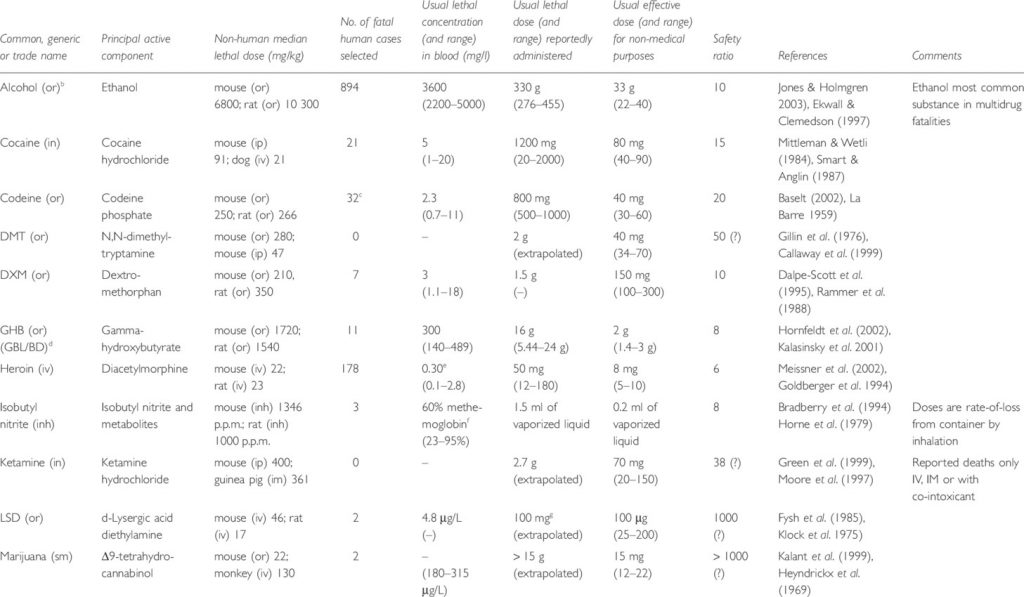A comment on this morning’s post will make a good post for today.
Cannabis has no LD50 (no lethal overdose)
ANY substance has an LD50 dose: Aspirin, Tylenol, salt, sugar, Nicotine, even water. Contrary to what stoners would have you believe, there is a way to overdose on marijuana. The people who advocate for weed are either making money from it, getting high from it, or are just plain uninformed on the subject, and will claim that it is harmless. While marijuana is safer than most other recreational drugs, there is still a risk there.
Before we begin, in the interest of full disclosure: I feel that the war on drugs does more harm than good, and I think that marijuana should be legal. I also think that people who smoke weed now are mostly inconsiderate assholes who force those of us who choose NOT to use marijuana to put up with that horrible smell AND their juvenile antics.
Let’s begin with a point that is almost never talked about: smoking marijuana carries all of the risks of smoking: lung cancer, emphysema, etc. The lungs aren’t helped by deliberately inhaling large quantities of smoke. This makes smoking marijuana more dangerous than ingesting it.
How about the reason why people smoke: the THC?
Years ago, I was the first paramedic to treat a patient who had overdosed on what the patient referred to as “legal weed,” which later turned out to contain a synthetic form of THC called “Spice,” which is 40 times more potent than natural THC. It caused me to do a lot of research on marijuana and the possibility of overdose.
Let’s start with a discussion of the lethal dose for various common substances.

Benno Hartung et al. (2014) report that the lethal half dose (LD50) for THC in humans is estimated to be around 30 mg/kg. This means that approximately 2 grams (.07 ounces) of pure THC has a 50% chance of killing a 150 pound man. This is the amount of THC found in 10 grams (.35 ounces) of high grade weed with 20% THC content. Moreover, the DEA reports that concentrated THC derivatives known variously as “wax,” “dabs,” or “butane hash oil” consisting of up to 80% THC are now available on the streets; one tenth of an ounce of these would contain a lethal half dose of 2 grams of THC. Robert Gable (2004) also reports that the lethal half dose of marijuana is about 15 grams or one half ounce; however, he does not specify the THC percentage of the marijuana.
The reason why marijuana gets this reputation for being impossible to OD on is the relationship between the amount of THC it takes reach intoxication, versus the amount it takes for a fatal dose.
The issue here is not so much the total lethal dose, but how close you must be to the lethal dose in order to get the effect you are looking for. The largest cluster of substances has a lethal dose that is 10 to 20 times the effective dose: These include cocaine, MDMA (often called “ecstasy”) and alcohol. A less toxic group of substances, requiring 20 to 80 times the effective dose to cause death, include Rohypnol (flunitrazepam or “roofies”) and mescaline (peyote cactus). The least physiologically toxic substances, those requiring 100 to 1,000 times the effective dose to cause death, include psilocybin mushrooms and marijuana, when ingested. This makes marijuana safer than alcohol, MDMA, and other drugs, but it is not proper to say that there is NO risk.
I’ve found no published cases in the that document deaths from smoked marijuana, so the actual lethal dose is a mystery. Smoking marijuana is less risky than eating it from an overdose perspective because not all of the marijuana smoked is absorbed.
So now you know.
However, whenever I have posted about weed in the past, I always get tons of uninformed pro weed stoners coming by to tell me how wrong I am. I am not interested in that debate, so comments on this post and the earlier one will be closed. It just isn’t something that I want to debate, nor do i want this blog to become a blog about the risks and benefits of marijuana.